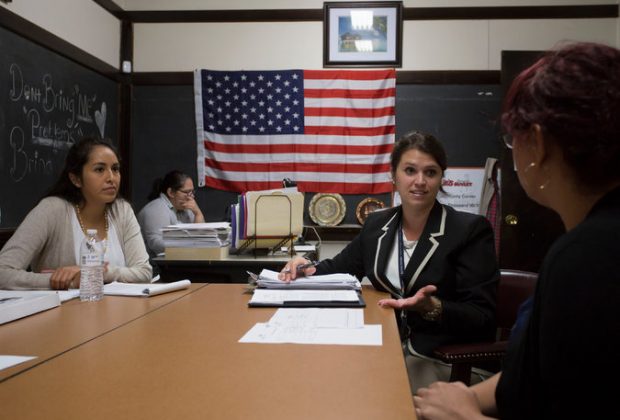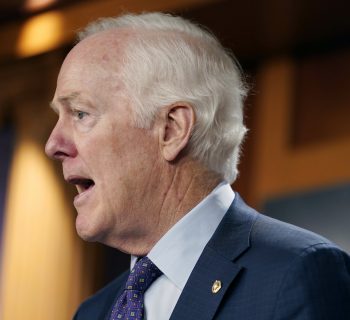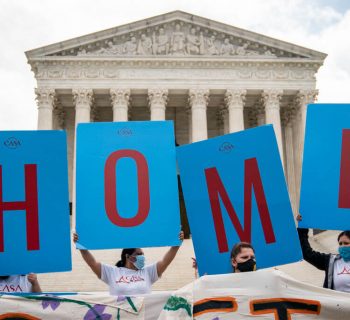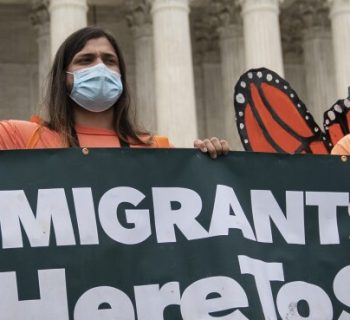By Binyamin Appebaum, The New York Times ~ October 12th, 2016
HAZLETON, Pa. — Thousands of Dominicans have poured into this little city in eastern Pennsylvania since 2001 to work in the food plants and warehouses on the edge of town, where the highway to New York meets the highway to Philadelphia.
Hazleton’s population is growing for the first time in more than half a century. Landlords, doctors and shopkeepers are learning to love their new customers.
But the city’s economic evolution has left behind its previous, non-Hispanic working class, and the presidential election has crystallized its frustrations. Many of those losing ground economically, including lifelong Democrats, say they plan to vote for Donald J. Trump, the Republican nominee. Many of those who are prospering, including lifelong Republicans, say they will vote for the Democrat, Hillary Clinton.
For both sides, how to deal with immigration has become a defining political issue, one that is likely to transcend the contretemps over Mr. Trump’s treatment of women that has cost him so much support among elected Republicans. This city was built by European immigrants who flocked here a century ago to work in the coal mines. Their children found better jobs in the factories. Now their grandchildren are struggling against economic decline and cultural displacement.
“I don’t care for this town no more because of the Hispanics,” said Lewis Beishline, 70, as he sat drinking at 11 a.m. on a Friday at Cusat’s Cafe, a bar owned by the mayor of Hazleton, who lives upstairs. Mr. Beishline, a retired welder, said he moved from Hazleton to a nearby town last year because he no longer felt safe.
He plans to vote for Mr. Trump, he said, “because of the immigration.”
The Hispanic community, meanwhile, is eager to establish its own political power in the face of what many describe as persistent and painful discrimination. Community leaders in this city of 25,000 say they have registered more than 800 Hispanic voters in recent months, expanding the voting rolls by almost 10 percent.

Amanda Lara, left, with her parents Guillermo and Sandra Lara at their home in Hazleton, Pa.
Niko J. Kallianiotis for The New York Times
“I tell my kids, if someone asks where you are from, you say ‘Hazleton,’” said Guillermo Lara, 49, who moved here from Mexico in the early 1990s and whose two daughters were born here. “We’re here, and we don’t go nowhere. We want more.”
That sharp divide is mirrored by the candidates seeking the Oval Office. Beyond his promised wall and deportations, Mr. Trump has denigrated immigrants repeatedly, at times without distinguishing between legal and illegal immigration.
“Donald Trump’s position on illegal immigration plays a big role in his support not only in Hazleton but in northeast Pennsylvania,” said Lou Barletta, a Republican who represents the region in Congress and has stood by his nominee as other Republicans in Congress have fled. In 2006, as Hazleton’s mayor, Mr. Barletta championed a first-in-the-nation ordinance penalizing employers and landlords for dealing with illegal immigrants. The courts blocked it from taking effect, but Mr. Barletta said Mr. Trump’s popularity reflected the continued demand for stronger government action. “He’s going to win here, and win big,” Mr. Barletta said.
Mr. Barletta introduced Mr. Trump at a rally in nearby Wilkes-Barre on Monday night, declaring that voters in northeastern Pennsylvania would propel Mr. Trump to the White House.
Mrs. Clinton, by contrast, has celebrated immigrants, both legal and illegal, as important contributors to American society. Her campaign describes her plan to create a pathway to citizenship for undocumented immigrants as one of her most important ideas for increasing economic growth.
“Comprehensive immigration reform will grow our economy and keep families together — and it’s the right thing to do,” Mrs. Clinton said in accepting the party’s presidential nomination in Philadelphia, about 100 miles southeast of Hazleton.
The Hispanic population grew faster in Luzerne County, which includes Hazleton, than almost any other county between 2000 and 2011, according to the Pew Research Center. While immigration has slowed since the 2008 recession, Hispanics continue to move here from larger cities like New York and Paterson, N.J.
In the 2000 census, just 4.9 percent of Hazleton’s population identified as Hispanic. A decade later, that figure was 37 percent. By 2014, the most recent data available, 46 percent of the population said it was Hispanic. In all likelihood, Hazleton is now a majority-Hispanic city, just like the nearby cities of Reading and Allentown.
The Hispanic ascendence emerged from seismic economic shifts, said Jamie Longazel, a professor of sociology at the University of Dayton who grew up just outside Hazleton and wrote a book, “Undocumented Fears,” about the city’s struggles with immigration.
When the local coal mines began to close in the 1950s, Hazleton residents raised money to build an industrial park that attracted factories to the region. When the factories began to leave in the 1990s, the city mobilized again. Local officials won state permission to create one of Pennsylvania’s largest tax-free Keystone Opportunity Zones. A Cargill meat processing and distribution plant arrived in 2001. Other distribution businesses have followed, including an Amazon.com warehouse.
Many residents claim that city officials advertised for low-cost immigrant labor on billboards in New York or New Jersey, but Mr. Longazel said there was no evidence that ever happened. The truth is that the immigration was unanticipated but most likely inevitable.
“The new jobs don’t pay as much as the old jobs did, and the reality is that native-born folks were just not interested,” Mr. Longazel said.

Donald Trump and Lou Barletta campaign signs in downtown Hazleton, Pa.
Niko J. Kallianiotis for The New York Times
The city also was also aging. Almost a quarter of the population was over 65 in 2000, roughly twice the national average.
And nature abhors a vacuum — especially in a work force.
Many of the new arrivals trace their roots to one Dominican city, San José de Ocoa. Hazleton’s old shopping streets, nearly abandoned in the 1990s, are now lined with Dominican bakeries, barbershops, travel agencies and Mexican restaurants. The Italian restaurants are now run by Mexican families. The city has two Spanish radio stations and a television station that broadcasts six hours of local programming a day.
Stephen M. Schleicher, a dermatologist, said Hispanic residents now made up a third of his patients. He has hired a bilingual receptionist and is looking for a bilingual nurse. He has started placing ads in the local Spanish-language newspaper.
Dr. Schleicher, a lifelong Republican, said that Mr. Trump’s views on immigration had persuaded him, albeit reluctantly, to vote for Mrs. Clinton. “We’re seeing a total revitalization despite the government trying to keep the immigrants out,” he said. “It would have been a ghost town of older white people.”
Yet it is easy to overstate Hazleton’s recovery. Many of the new jobs pay poorly. Almost 29 percent of the population lived in poverty in 2014, almost twice the national average.
And Hazleton’s evolution has inspired deep resentment. Many residents complain bitterly about the new arrivals not speaking English, about loud music late at night, about people walking in the street and driving without regard for traffic rules.
Wana Bostic, 45, scrapes by on $11.50 an hour as a home health aide. She said that she was not paid nearly enough, but that employers can squeeze workers because of the ready availability of immigrant labor.
“No one talks about white Americans and what we really need,” she said.
Crime has increased, as has drug use. The police force, meanwhile, has shrunk with declining tax revenue. Many residents are convinced that illegal immigration is to blame.
“If you come into the country breaking the law, that’s not a good way to get your foot in the door,” said Nick Zapotocky, 31, who now has three deadbolt locks on the door of his home. “That says you’re willing to break the law again.”

Nick Zapotocky, owner of Iron Hawg Custom Cycles in Hazleton, Pa., says he has three deadbolt locks on his door at home. Crime has risen, and the police force has shrunk. Niko J. Kallianiotis for The New York Times
He voted for President Obama in 2008. In 2012, he did not vote. And this year, he said he will vote for Mr. Trump.
Francisco Torres-Aranda said people were blinded by their fear of change, unable to see the benefits that immigration is bringing to Hazleton. Mr. Torres-Aranda, whose father was Mexican, runs a company that makes caps for old wells. He employs 30 people in the summer, only a few of them Hispanic. And he noted that some of the largest employers in the area are now Mexican companies, including Bimbo Bakeries, which has a plant nearby that makes millions of Thomas’ English Muffins.
Mr. Torres-Aranda said he had always voted Republican, loyal to his pocketbook. But he plans to vote for Mrs. Clinton, he said.
“They fear they’re losing what they remember,” he said. “But what can you do? The United States is in evolution. Apple pie came after the Germans arrived. Maybe it will now be ‘As American as salsa.’ So what?”
Hazleton still has no Hispanic elected officials. The city just added its first Hispanic police officer. The public school system, which has very few Hispanic teachers, was ordered by the federal Department of Education in 2014 to improve efforts to teach English to immigrants, and to communicate with parents.
But a second generation of Hispanic Americans in Hazleton may force change.
Mr. Lara worked three jobs to pay private school tuition so his daughters could avoid Hazleton’s high school. After 12-hour days in a factory, he washed dishes at night and cleaned offices on weekends. Two years ago, his eldest daughter, Amanda, graduated from Ithaca College in upstate New York with a degree in psychology and came home.
She teaches after-school classes for Hispanic children in the building that was once her elementary school. It has become a community center thanks in large part to Joe Maddon, a Hazleton native who manages the Chicago Cubs.

Amanda Lara, left, a teacher, and Andrea Kolb, education director at the Hazleton Integration Project, interview a prospective employee. Niko J. Kallianiotis for The New York Times
Ms. Lara, who is studying for a master’s degree at the University of Scranton, said racial tensions had increased. At the city’s annual Funfest, she noticed an empty space between the Hispanic vendors and the Polish and Italian vendors.
“And I hear it from my kids,” she said of her students. “They’re not dumb. They can tell when they’re not liked or they’re not welcome.”
But she said she was not sure she wanted to move away. “People say, ‘Why would you want to stay there?’” she said. “Well, for one thing, this is my hometown.”







